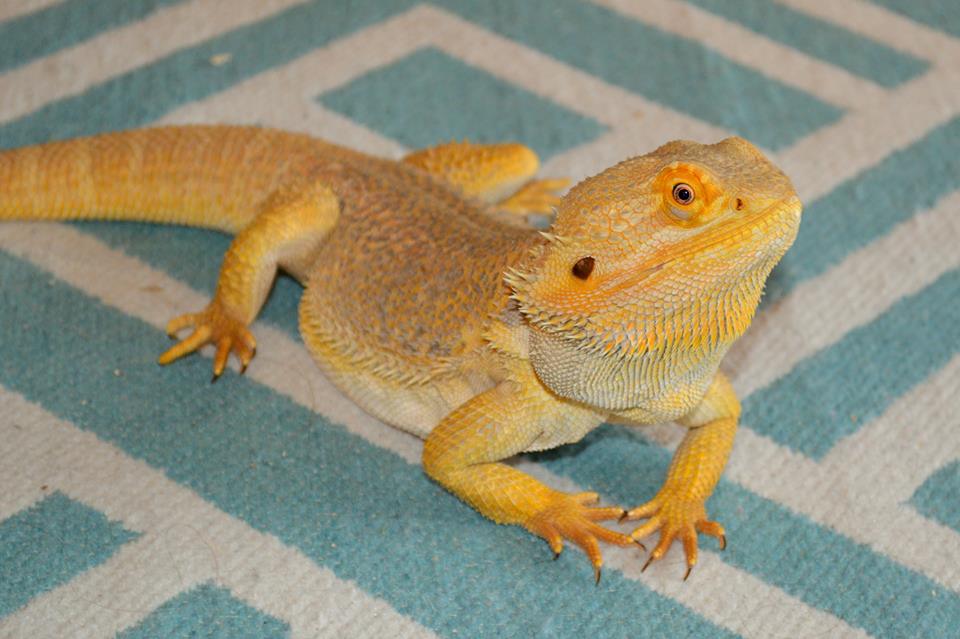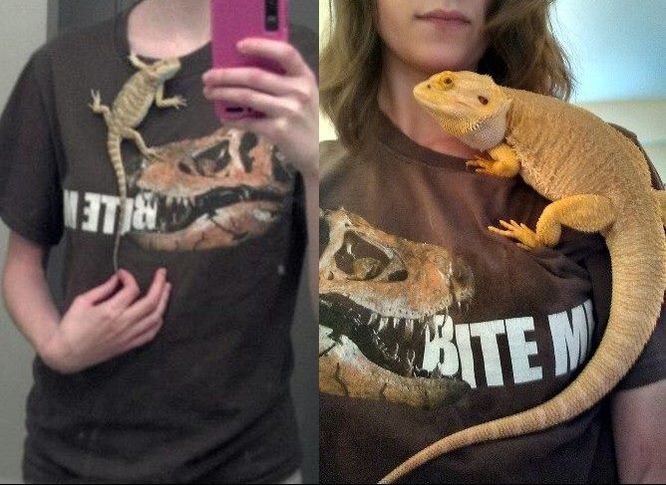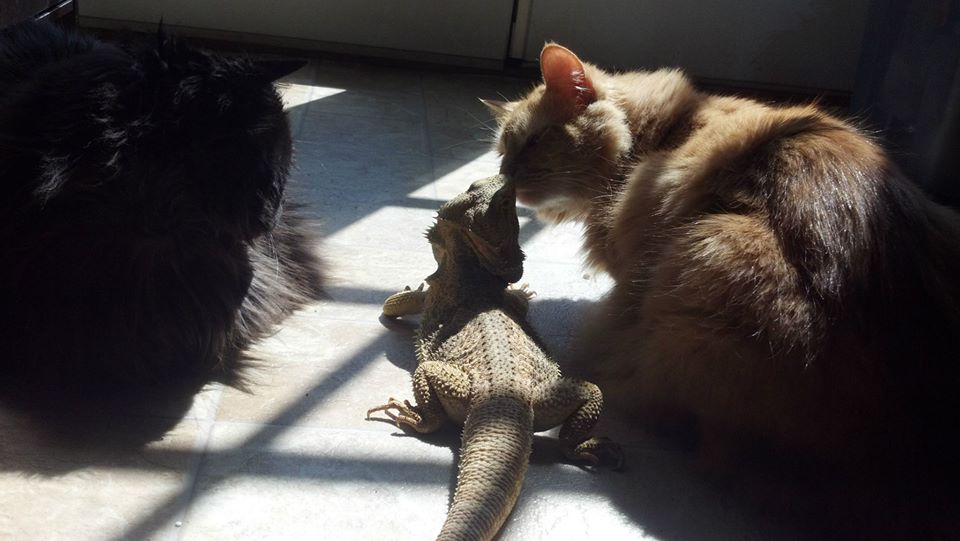|
Bearded Dragons can make excellent pets for those who want a lizard that can be handled, but also have enough space for larger tank or enclosure. So your child has expressed interested in a scaley friend or perhaps you are hoping to get into the reptile hobby yourself! Undoubtedly, you've heard someone mention "bearded dragons" as a good beginner pet. While they are very common in the pet trade, they have their own pros and cons. One of the difficult aspects of the reptile-keeping hobby is maintaining the right environment for your pet. This is typically measured in terms of temperature and humidity. For example, an animal that is native to the rainforest would need to have that environment mimicked in its enclosure in captivity. For most people, recreating a rainforest inside their own home can present a daunting challenge. Since Bearded Dragons are native to the woodlands and deserts of Australia, new owners can focus on getting the correct temperatures for their pet without the added complication of higher humidity requirements. Additionally, Bearded Dragons have a naturally more docile temperament. Active youngsters can become calm and mellow adults with regular handling. All young lizards will tend to be flighty, but hatchling bearded dragons are relatively calmer compared to young water dragons or iguanas. At a typical pet store, baby bearded dragons will be easier for a novice to handle than baby leopard geckos. However, leopard geckos may make better pets for those who want an animal that has less demanding space requirements or those who tend not to be home during the day. You may have seen the cute baby lizards that look like the picture on the left. These pictures are of the same lizard! Most will reach adult size within the first year.A Bearded Dragon's size can be a pro or a con depending on what someone is looking for in their pet. On one hand, their size makes them a more interactive pet. It's much easier to supervise a free roaming adult bearded dragon when they are easier to catch and cannot fit into impossibly small spaces like an anole or a gecko. They also are not as large as other lizards such as tegus and iguanas that could easily cause harm to people or other pets. Of course, these medium-sized lizards will need larger enclosures than other typical beginner species (such as the leopard gecko mentioned earlier). An enclosure that is four feet by two feet might be a good home for a bearded dragon that is also allowed time out of its enclosure for exercise. This is not the type of habitat that can be easily fit on top of a bookcase and blend in with the room's decor. While it is common practice to keep bearded dragons in a 40 gallon glass tank, this might not work for every lizard. Some will be too large or active and others may be stressed by their own reflection. Bigger lizards also mean bigger appetites! Baby bearded dragons can certainly run up a feeding tab. Most of their diet will consist of crickets, mealworms, and roaches. As they get older, they may show more of an interest in fruits, carrots, and other leafy green vegetables. It's not uncommon for a baby bearded dragon to eat $20-$40 worth of food in one week! They will need to be fed daily and will need their meals to be dusted with calcium (with D3) to support their bone growth. Adult bearded dragons may only need to eat every few days, but you can still expect to spend about $5-$10 per week on food. Bearded Dragons are diurnal which means that they are only active during the day. It is best to feed them after they have had a chance to warm up in the morning, but not too late in the day that their bodies will not have the heat necessary to digest their food. Food that is not consumed should be removed. People who have busy schedules during daylight hours may find it difficult to find a good feeding time for their lizard. A Bearded Dragon may be a great addition to your home, but make sure to do your research first! These lizards typically live 10-15 years, so they are no minor commitment. It is not uncommon for owners to become "bored" with their pet. Never release a pet into your surrounding environment. Not only is this harmful for your pet, but it can also be harmful for the local ecosystem. There are many methods for re-homing or surrendering a pet that is no longer wanted. Please research these options for your area. If you are considering a new reptile pet, make sure that you have the physical and financial resources to care for your new friend. As exciting as it may be to see a baby grow into an adult, consider contacting your local reptile rescue to find out if they have any bearded dragons that are up for adoption.
Pet lizards have become more popular in recent years and the Bearded Dragon may have had a significant contribution to this rise in popularity. Their unique appearance and calm temperament make for great handeable pets as long as they have owners that are willing to meet the requirements for their care.
2 Comments
|
About the blogFerrets and Friends, LLC has four writers bringing you information on a variety of topics from pets to wildlife, education to conservation, and from new developments in our business to information about our industry. Learn something new each week! Archives
August 2020
Categories
All
|



 RSS Feed
RSS Feed